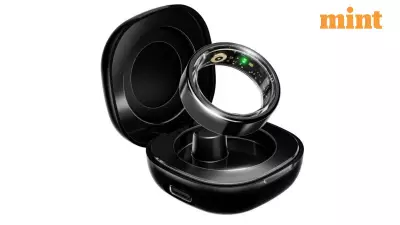
Valve Returns to VR with Ambitious Steam Frame Headset
Valve Corporation is making a serious comeback in the virtual reality space with its newly announced Steam Frame headset, scheduled to launch in spring 2026. This marks the company's most ambitious VR project since the Valve Index, representing a significant shift toward creating a device that transforms your entire Steam library into a wearable experience rather than just a desktop application.
Hardware Specifications and Design
The Steam Frame boasts impressive hardware that positions it alongside premium VR systems like PSVR 2. The device features dual LCD screens with 2160 x 2160 pixels per eye, supporting refresh rates ranging from 72Hz to 120Hz, plus a 144Hz experimental mode. Using advanced pancake lenses, the headset delivers approximately 110 degrees field of view, providing an immersive visual experience.
Powering the standalone headset is a Snapdragon 8 Gen 3 class processor coupled with 16GB of RAM. Storage options will extend up to 1TB with additional expansion possible through a microSD slot, catering to gamers who prefer keeping their entire library installed.
Streaming-First Approach and Wireless Innovation
What sets Steam Frame apart is Valve's streaming-first philosophy. The package includes a dedicated 6GHz wireless adapter that connects directly to your computer. This adapter features dual radios - one dedicated to handling heavy video and audio streaming to the headset, while the other maintains regular Wi-Fi traffic. This design promises seamless PC VR and flat Steam gaming experiences without cables or home network congestion.
The headset incorporates sophisticated eye tracking technology that enables what Valve calls "foveated streaming." This system keeps the area you're directly looking at sharply detailed while reducing peripheral detail, optimizing bandwidth usage while maintaining visual quality where it matters most.
Tracking and Comfort Features
For movement tracking, Steam Frame utilizes inside-out tracking with four external cameras, eliminating the need for external base stations. Two additional internal cameras handle eye tracking functionality. The passthrough feature allows users to see their physical environment while wearing the headset, particularly useful in shared spaces or smaller rooms.
Comfort has been a key design consideration. The complete unit weighs approximately 440 grams, including the head strap and a 21.6Wh battery mounted at the rear for better weight distribution. The front module is noticeably lighter, preventing the forward-pulling sensation common in earlier VR headsets.
Controllers and Audio Experience
Steam Frame introduces new controllers that resemble split gamepads rather than traditional VR wands. They include standard gaming inputs - ABXY buttons, D-pads, thumbsticks, triggers, and bumpers - with six-degree tracking and haptic feedback. Valve has incorporated magnetic thumbsticks and capacitive finger sensing for improved durability and enhanced interaction in VR environments.
Audio is integrated directly into the head strap with stereo speakers positioned to minimize vibrations that could interfere with the tracking system. This design provides spatial audio while maintaining tracking accuracy.
Software Ecosystem and Compatibility
Running on SteamOS, the headset leverages Valve's extensive experience with Steam Deck and Proton compatibility layers. Users can run SteamOS or Proton-compatible games directly on the device or stream content from a PC via the 6GHz adapter. Valve is also opening the platform to Android titles, providing an accessible path for developers who have created content for Meta Quest and other Android-based VR systems.
The company will implement a Steam Frame Verified program similar to the Steam Deck verification system, helping users identify games optimized for standalone use. The success of this initiative will depend on developer adoption and how quickly they optimize their titles for the new hardware.
Market Position and Competitive Landscape
Valve enters a transformed VR market where Meta has popularized standalone headsets and Sony's PSVR2 targets the console space. Steam Frame aims to bridge multiple segments - functioning as both a quick-session standalone device and a high-end wireless PC VR headset for enthusiasts.
While specifications are impressive, key questions remain about pricing and battery life. The headset's market success will depend on whether Valve can position it competitively against the combined cost of a Quest 3 and mid-range PC VR setup. Streaming performance in real-world home environments with various router setups will also be crucial.
For the extensive Steam user base in India and globally, Steam Frame represents an appealing proposition - a VR headset that integrates seamlessly with existing game libraries rather than creating another closed ecosystem. If Valve delivers on its promises with smooth performance and reasonable pricing, Steam Frame could become the company's first VR headset with mass appeal beyond the enthusiast community.





